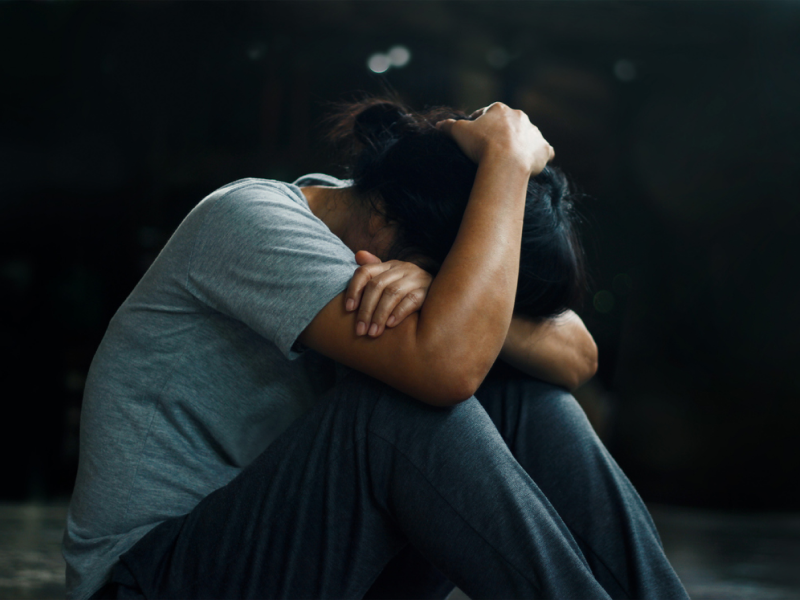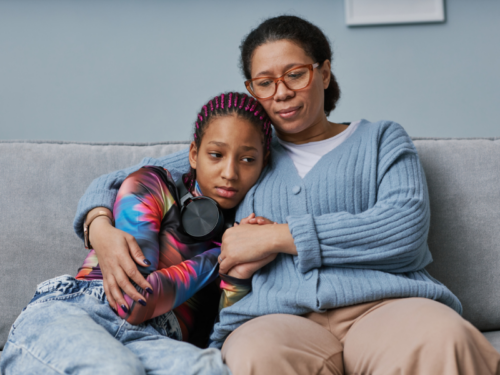
Table of Contents
Yes, Bipolar Disorder Can Cause Physical Symptoms—Here’s How to Cope

Written By: Sarah Fielding

Clinically Reviewed By: Dr. Don Gasparini
March 14, 2024
3 min.
High blood pressure, rapid heart rate, and an increased appetite are just some of the surprising physical symptoms of bipolar disorder.
Learn more about our Clinical Review Process
Table of Contents
When we think about mental health conditions, it’s often the cognitive and emotional symptoms that stick out. There’s the anxiety, depression, stress, and fear that come with different conditions (to name a few symptoms). But, the “mental” part of mental health conditions is just one part of the experience. A person living with a mental health condition can also experience a range of physical symptoms.
Take bipolar disorder, characterized by swift shifts in mood through either a manic or depressive episode. Mental symptoms can include racing thoughts, intense sadness, and feeling worthless, the American Psychiatric Association (APA) reports. But did you know there are also surprising physical symptoms of bipolar disorder?
“There are a number of physical symptoms that can occur with bipolar disorder, especially when it is in exacerbation,” says Charlie Health Primary Therapist Kathleen Douglass, MA, LCPC. Below, we dig into these (sometimes surprising) symptoms of bipolar disorder.

Begin holistic bipolar disorder treatment today
Our evidence-based program addresses mental and physical symptoms.
Physical symptoms of bipolar disorder
The physical symptoms of bipolar disorder are wide-ranging, depending on whether a person is experiencing a manic episode or depressive episode and (relatedly) what subtype of the mood disorder they have (bipolar I disorder, bipolar II disorder, or cyclothymic disorder). That said, common physical symptoms of bipolar disorder, according to the National Institute of Mental Health (NIMH), include:
- Jumpiness or restlessness
- High blood pressure
- Rapid heart rate
- Faster pulse rate
- More wired or active than typical
- Insomnia or hypersomnia
- Fast or slow talking
- Increased appetite for food and drink
- A greater desire for sex and other enjoyable activities
As mentioned, the prevalence of these symptoms varies based on what type of bipolar disorder someone has. For instance, a person with bipolar I disorder who deals with both severe manic symptoms and depressive episodes may experience all of the symptoms above depending on their current episode.
In contrast, bipolar II is characterized by bipolar depression and at least one hypomanic episode (a milder manic episode), so physical symptoms may primarily present as insomnia and slow talking save from a hypomanic episode. However, since bipolar II often co-occurs with other conditions like anxiety, ADHD, and eating disorders, it can bring additional symptoms, like squirming and shortness of breath.

Lastly, cyclothymic disorder includes hypomanic and depressive symptoms lasting on and off for at least two years, though these symptoms never rise to the level of an episode. A person with cyclothymic disorder, then, may include lower levels of all the above symptoms.
Unsure if bipolar disorder is causing your symptoms? Douglass recommends getting a medical workup to see if another underlying condition is to blame. For example, thyroid gland malfunction can impact your mood. Once you determine that it’s the mood disorder you’re experiencing, there are steps you can take to improve your quality of life.
Coping with bipolar disorder’s physical symptoms
Proper coping techniques and support can improve mental and physical health symptoms. For managing the physical and mental symptoms of bipolar disorder, Douglass recommends a treatment plan that includes psychotherapy and medication management. “Both are important in managing the condition’s symptoms,” she said.
Cognitive behavioral therapy (CBT) and dialectical behavior therapy (DBT) are among the best therapies for bipolar disorder. Medications, like mood stabilizers, antidepressants, and anti-anxiety medication, may also be helpful in further reducing bipolar symptoms. In instances when other treatment options haven’t been successful or bipolar disorder symptoms are severe, doctors may recommend treatment options like electroconvulsive therapy (ECT), which involves passing small electric currents through the brain.
Douglass also endorses lifestyle changes, like avoiding drugs and alcohol, getting enough sleep, and building a support system, as compliments to treatment.

Bipolar disorder treatment at Charlie Health
If you or a loved one are struggling with bipolar disorder, Charlie Health is here to help. Charlie Health’s virtual Intensive Outpatient Program (IOP) provides more than once-weekly mental health treatment for young people and families dealing with complex mental health conditions, including bipolar disorder, borderline personality disorder, and more. Our expert clinicians incorporate evidence-based therapies into individual counseling, family therapy, and group sessions. With this kind of holistic treatment, managing the physical and mental symptoms of bipolar disorder is possible. Fill out the form below or give us a call to start healing today.




